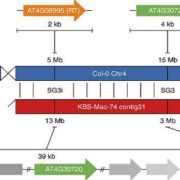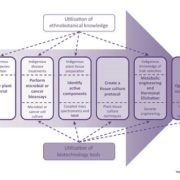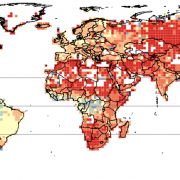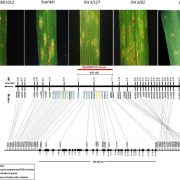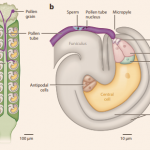Wheat exome sequencing and wheat ancestry (Nature Genetics)
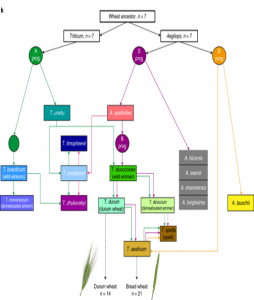 Wheat is of course a hugely important food for humans, and has been selectively bred across the globe for millennia. Modern bread wheats are hexaploid and contain three distinct subgenomes (AABBDD). As with other crops, there is a need to understand wheat’s ancestry and explore the greater genetic diversity of its extended family as sources of beneficial genes. A pair of back-to-back papers in Nature Genetics focus on wheat’s ancestry. He et al. sequenced exomes from 890 accessions of wheat landraces and cultivars, and conclude, “historic gene flow from wild relatives made a substantial contribution to the adaptive diversity of modern bread wheat.” Pont et al. used a similar approach, and conclude that today’s wheat genome has been, “shaped during domestication by human migration, anthropogenic selection and latterly by breeding.” Together, these studies provide, “a rich source of genetic diversity that can be applied to understanding and improving diverse traits, from environmental adaptation to disease resistance and nutrient use efficiency.”(Summary by Mary Williams) Nature Genetics 10.1038/s41588-019-0382-2 and 10.1038/s41588-019-0393-z
Wheat is of course a hugely important food for humans, and has been selectively bred across the globe for millennia. Modern bread wheats are hexaploid and contain three distinct subgenomes (AABBDD). As with other crops, there is a need to understand wheat’s ancestry and explore the greater genetic diversity of its extended family as sources of beneficial genes. A pair of back-to-back papers in Nature Genetics focus on wheat’s ancestry. He et al. sequenced exomes from 890 accessions of wheat landraces and cultivars, and conclude, “historic gene flow from wild relatives made a substantial contribution to the adaptive diversity of modern bread wheat.” Pont et al. used a similar approach, and conclude that today’s wheat genome has been, “shaped during domestication by human migration, anthropogenic selection and latterly by breeding.” Together, these studies provide, “a rich source of genetic diversity that can be applied to understanding and improving diverse traits, from environmental adaptation to disease resistance and nutrient use efficiency.”(Summary by Mary Williams) Nature Genetics 10.1038/s41588-019-0382-2 and 10.1038/s41588-019-0393-z


